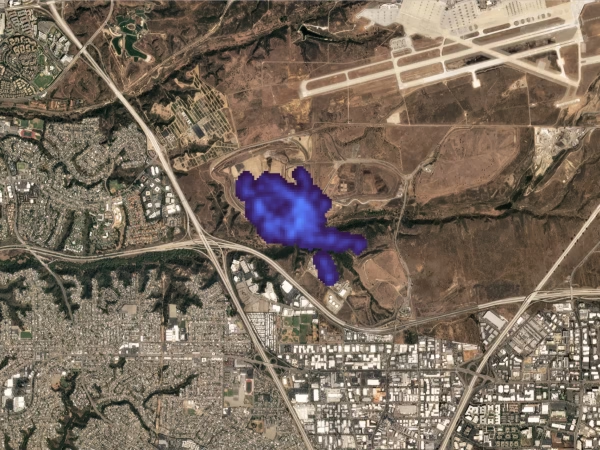SACRAMENTO — Gov. Gavin Newsom March 21 announced a state effort to cut methane pollution with the help of satellite technology.
The new initiative comes as the Trump Administration’s EPA works to dismantle decades of clean air and clean water protections. Specifically, the U.S. EPA is reconsidering the “endangerment finding,” which is the basis for federal actions to curb planet-warming emissions of greenhouse gases including carbon dioxide and methane.
The technology involves satellite-mounted methane sensors which send data to enable the state to locate and monitor large emissions of methane that could otherwise go undetected. This new data will allow state and local agencies to work together with industry to stop the leaks and protect public health.

Methane is a clear, odorless gas released from landfills, oil and gas operations, livestock facilities, as well as natural sources such as wetlands. It is a major pollutant that is 80 times more potent than carbon dioxide for near-term warming of the planet. Methane emissions are responsible for about a quarter of global carbon pollution. Controlling methane leaks helps speed up the state’s efforts to protect the environment.
The Governor’s announcement comes on his first day as Co-Chair of America Is All In, an expansive coalition in support of subnational climate action. As co-chair, he will work with other state and local leaders to advance solutions like methane-detecting technology.
The satellite project and the data acquired by it is made possible by a $100 million investment from the state’s controversial Cap-and-Trade program, which charges oil refineries, power plants and manufacturers for the excess carbon emissions they create in the state. One satellite has been launched with up to seven more to be deployed.
Revenue Collection:
The state holds quarterly auctions where it sells carbon emission allowance credits to excessive polluters, who are required to hold allowances for every ton of carbon they emit. CalMatters reported in January that the last quarter’s auction brought in $1.4 billion.
Greenhouse Gas Reduction Fund:
Revenues from these auctions are deposited into the state’s Greenhouse Gas Reduction Fun
The state will maintain a database and web portal to coordinate and document mitigation actions. While California does not own these satellites, state agencies will be able to select specific regions for observation. This data will also be available to communities to view methane mitigation efforts, education, and for outreach.
Tackling methane emissions
Last year, California followed through on a promise by former Governor Jerry Brown when a philanthropically-backed coalition, including the state, launched its ‘own damn satellite’ to help track dangerous pollutants like methane. Carbon Mapper uses an array of Tanager satellites, owned and operated by Planet Labs PBC, to deliver methane data to the California Air Resources Board or CARB. Tanager-1 is the first in a series of four planned satellites.
In 2023, California launched a new pledge for governments around the world to commit to cutting global methane emissions, one of the worst pollutants. The pledge is aimed at subnational governments – like California – and builds on the Global Methane Hub’s Global Methane Pledge that focuses on countries.



